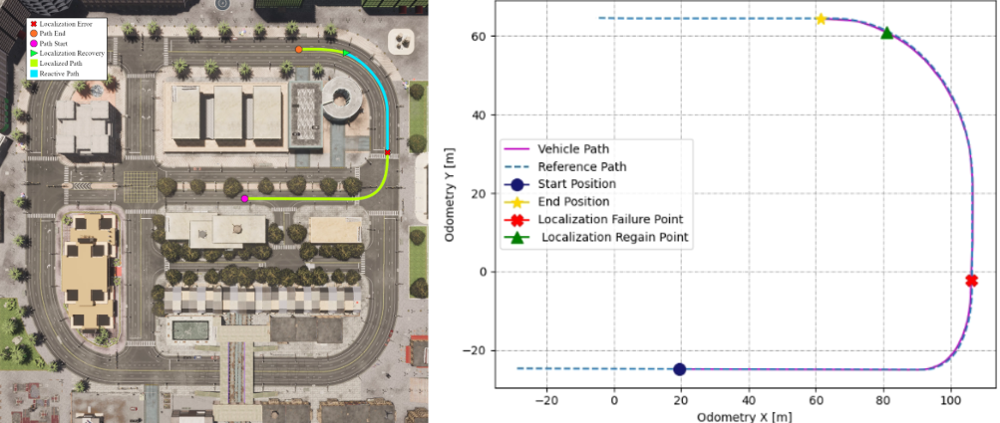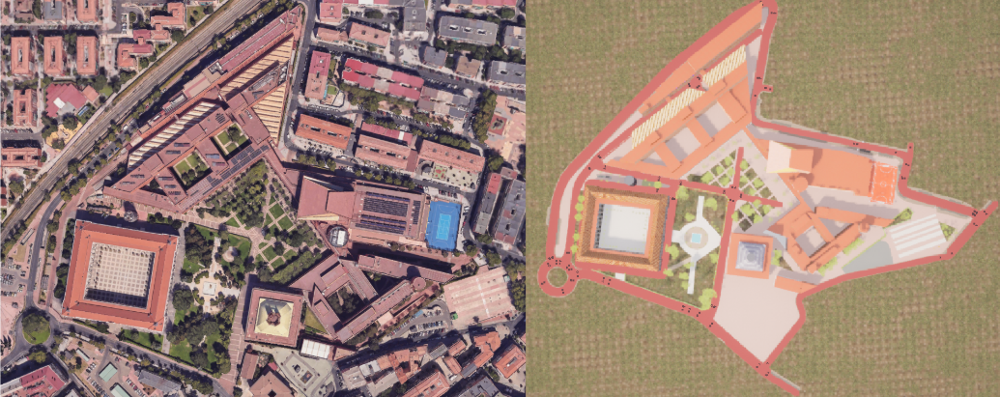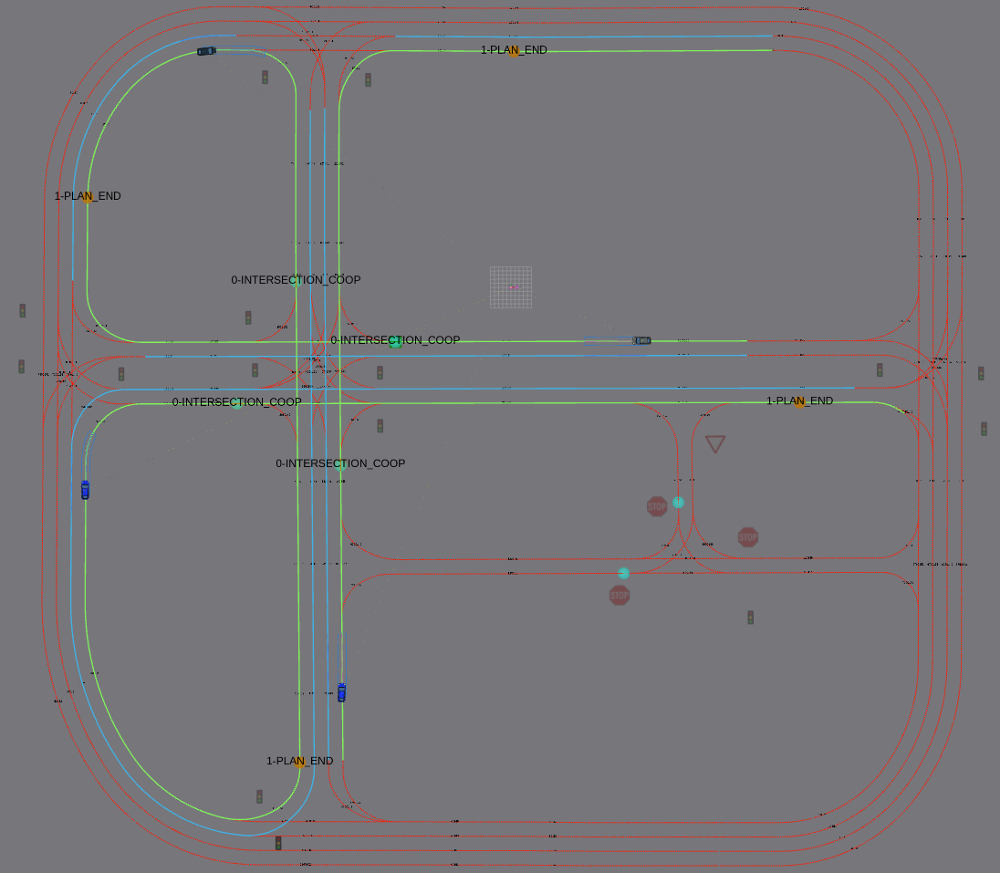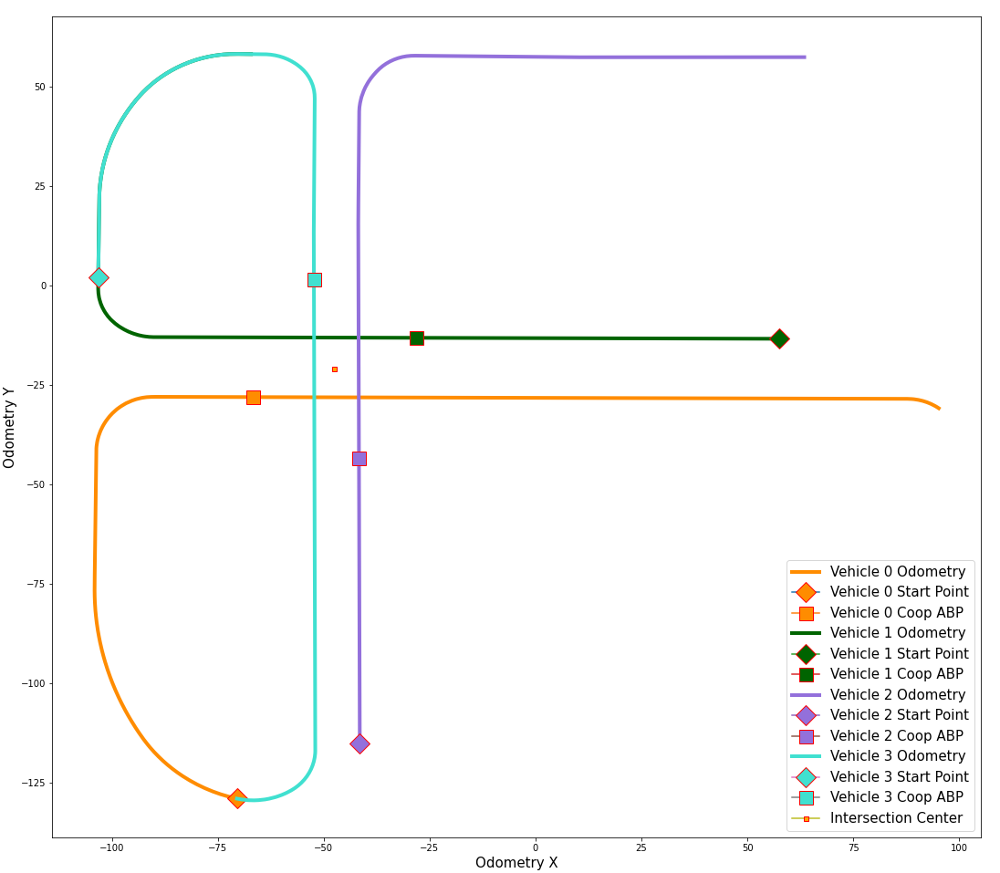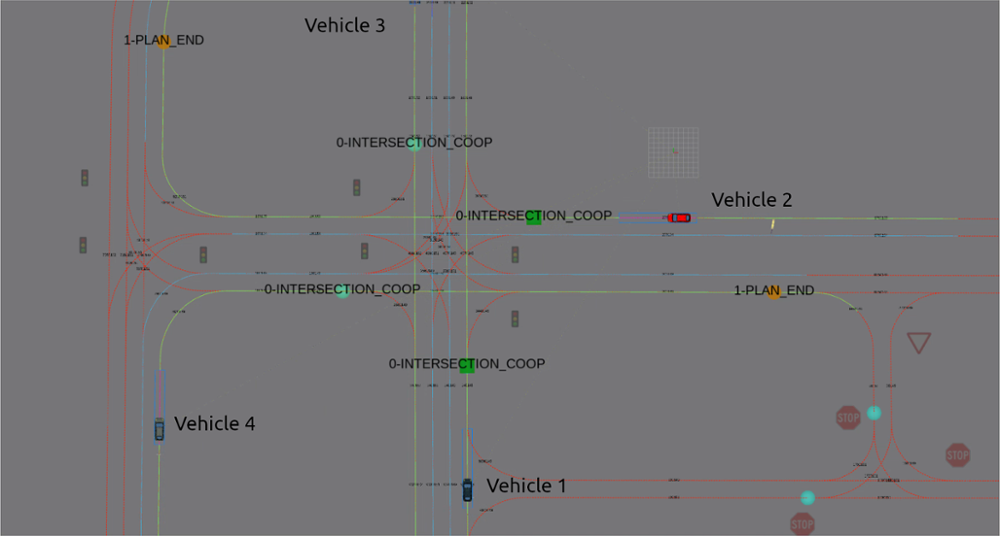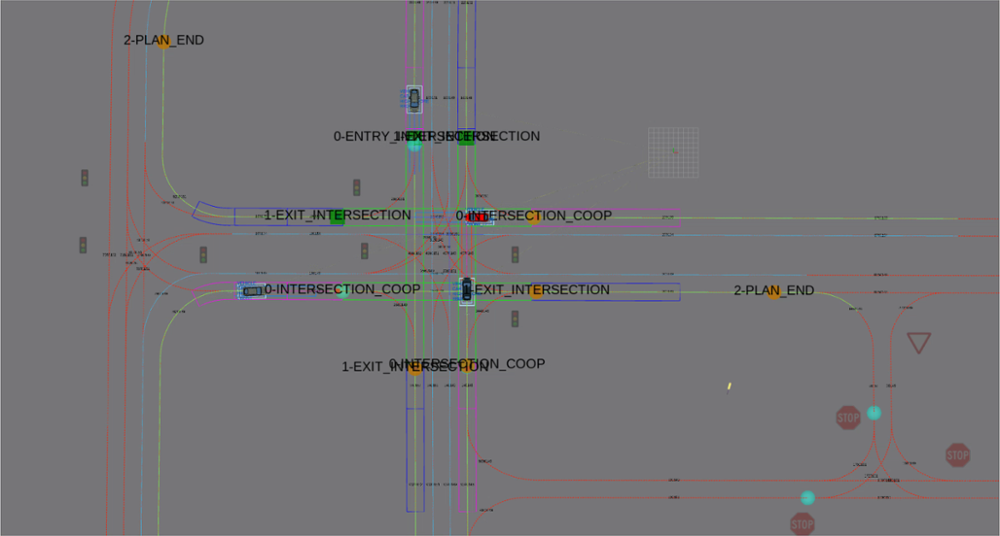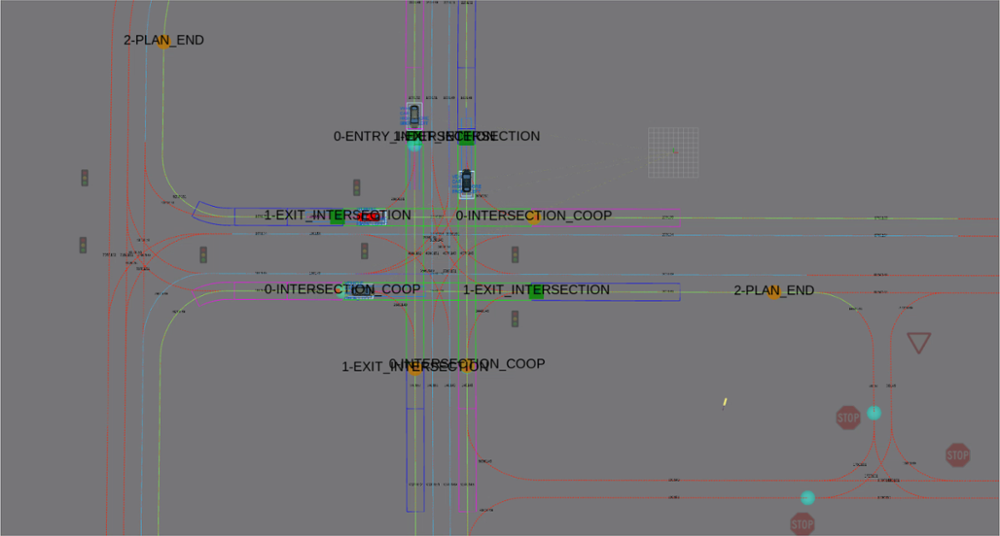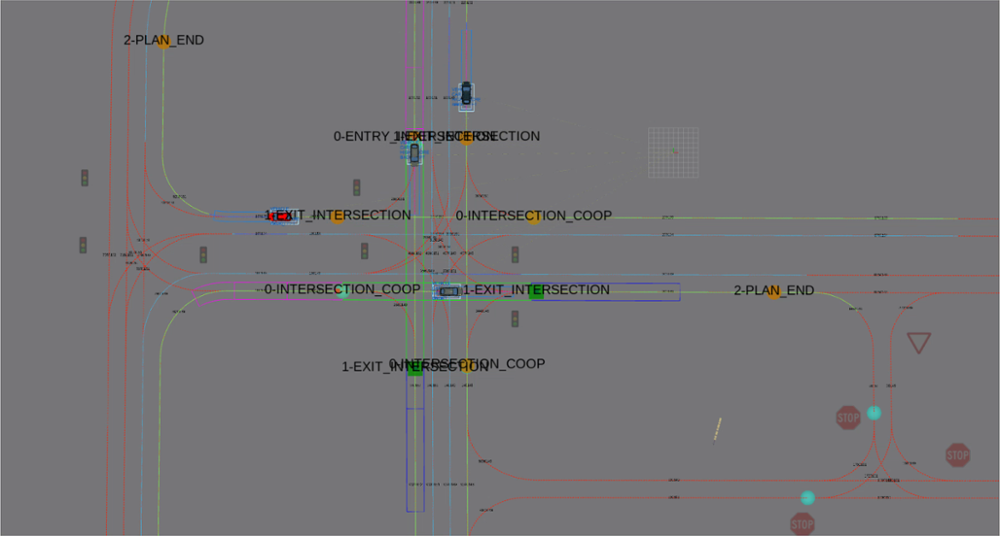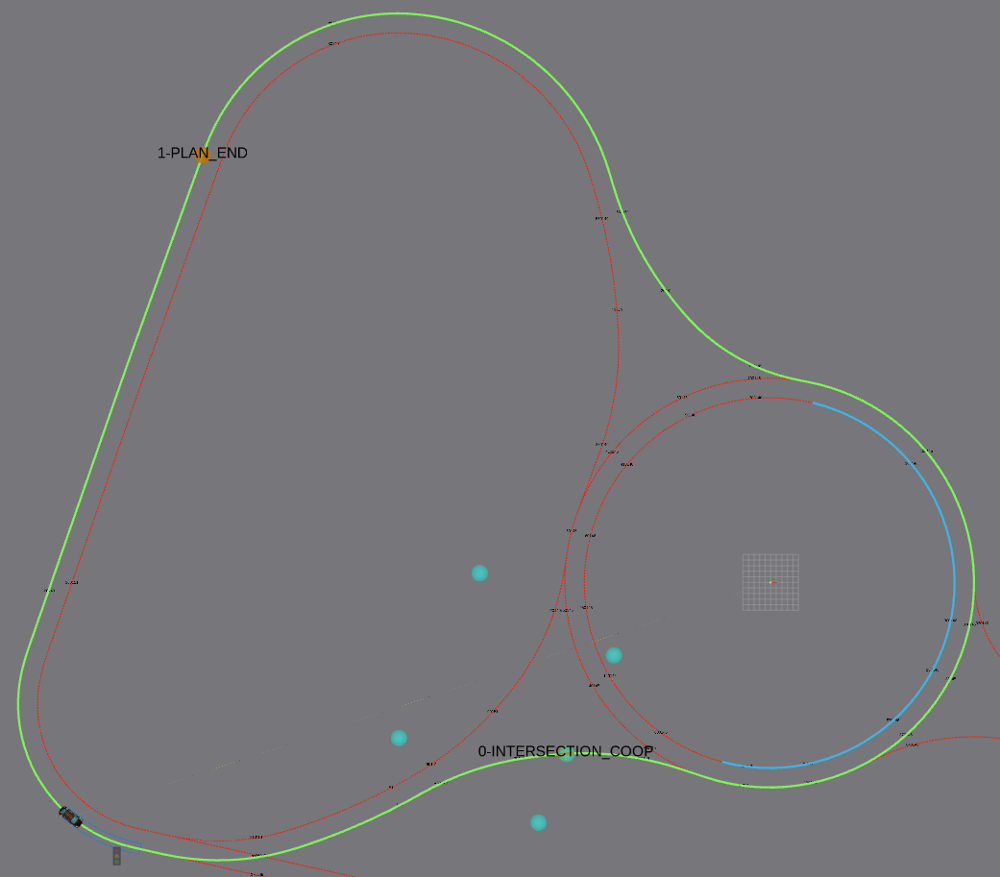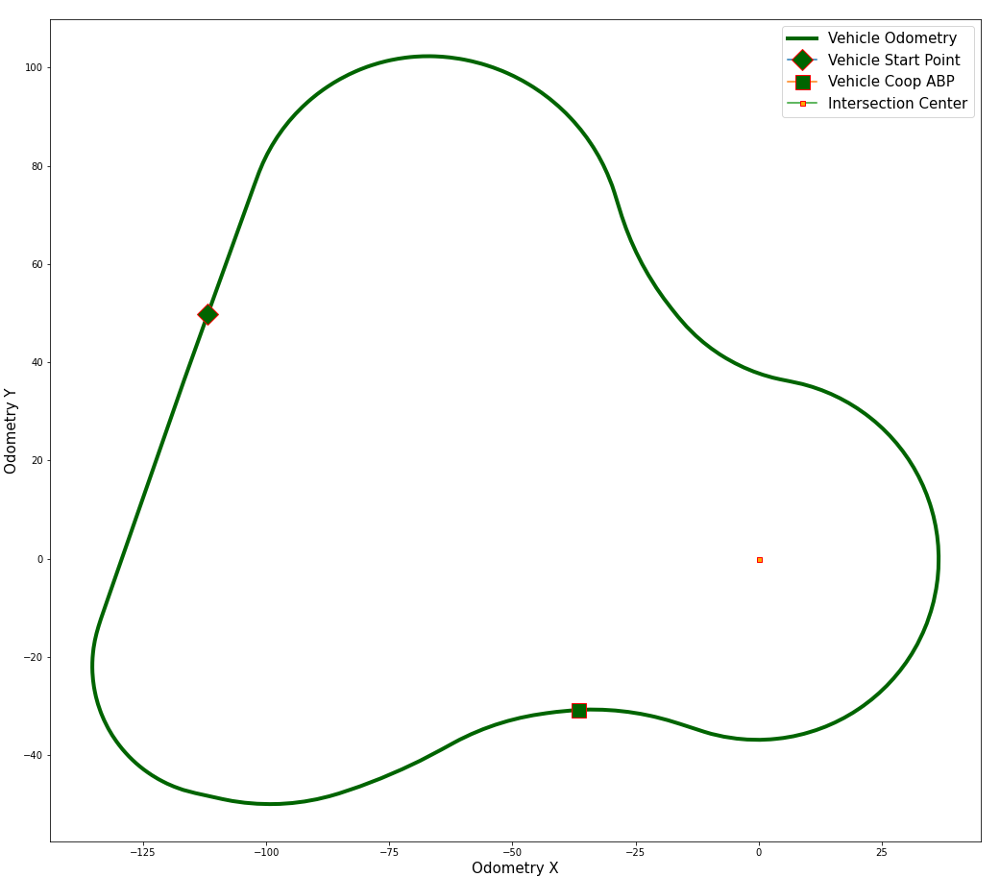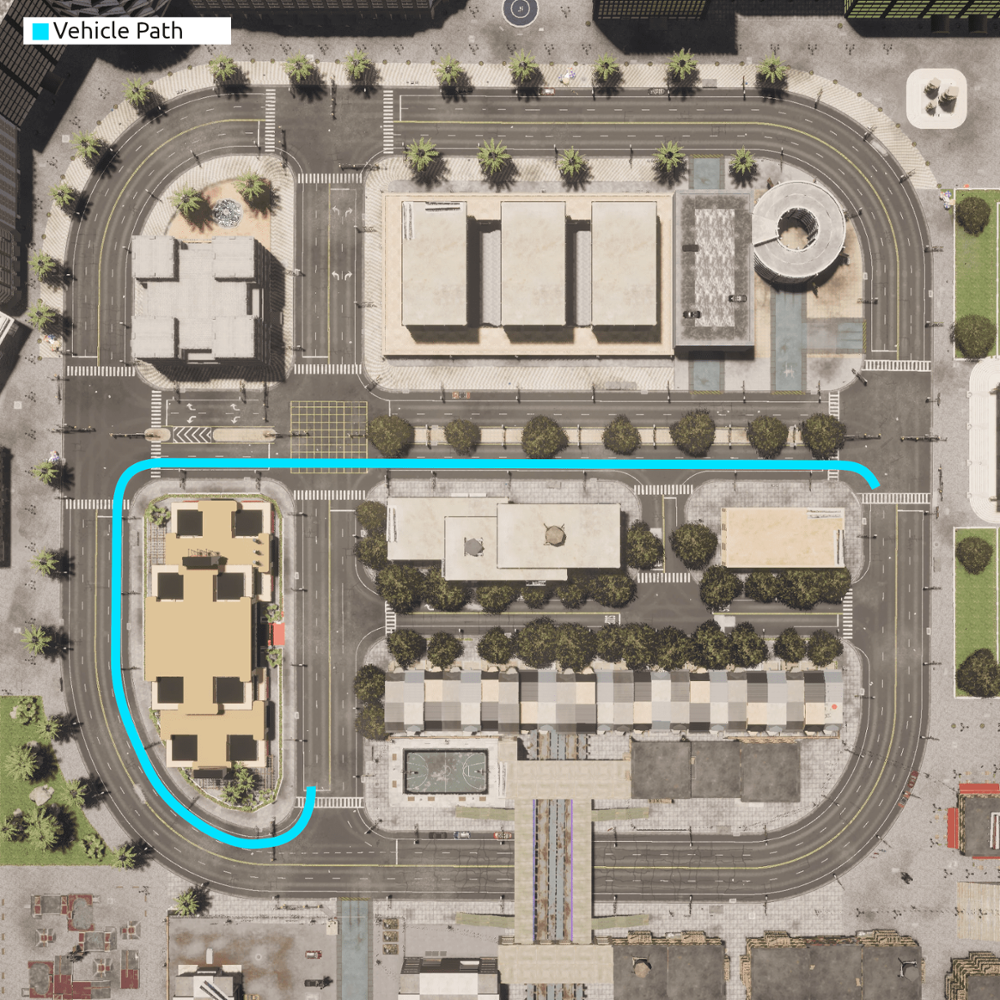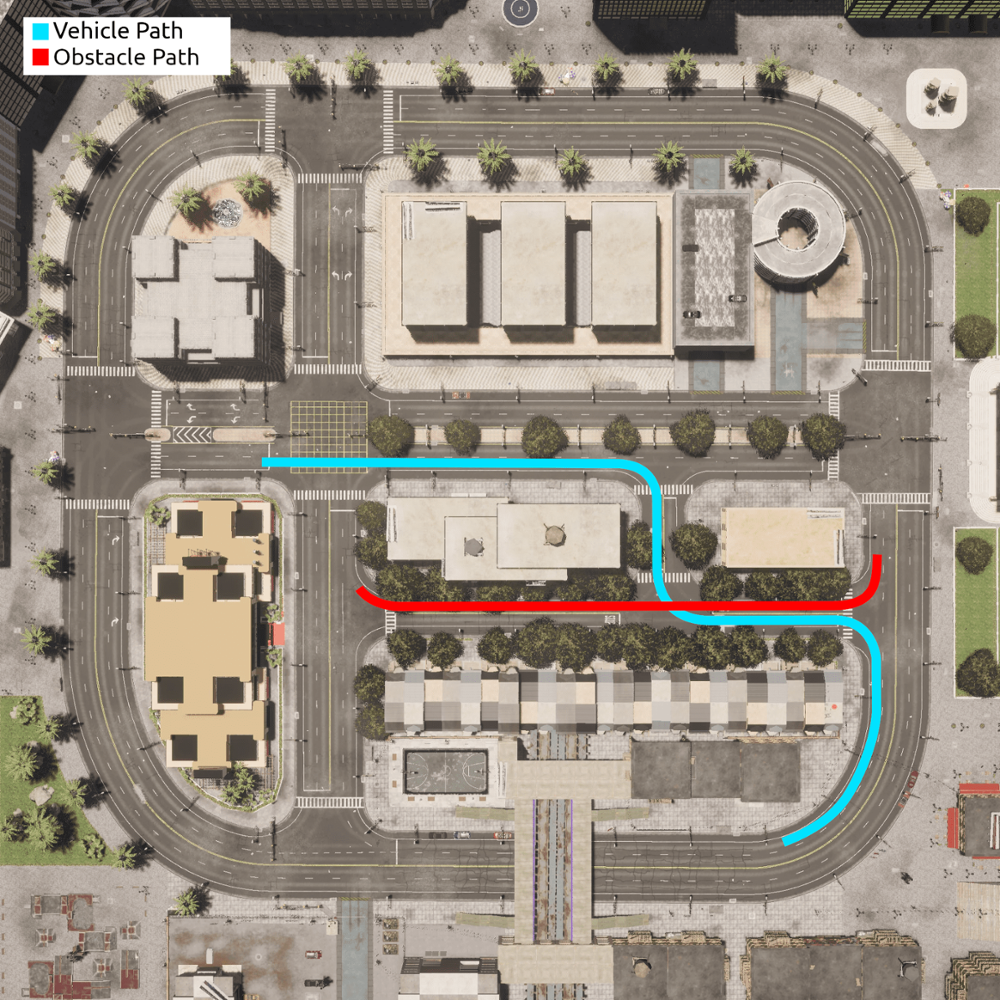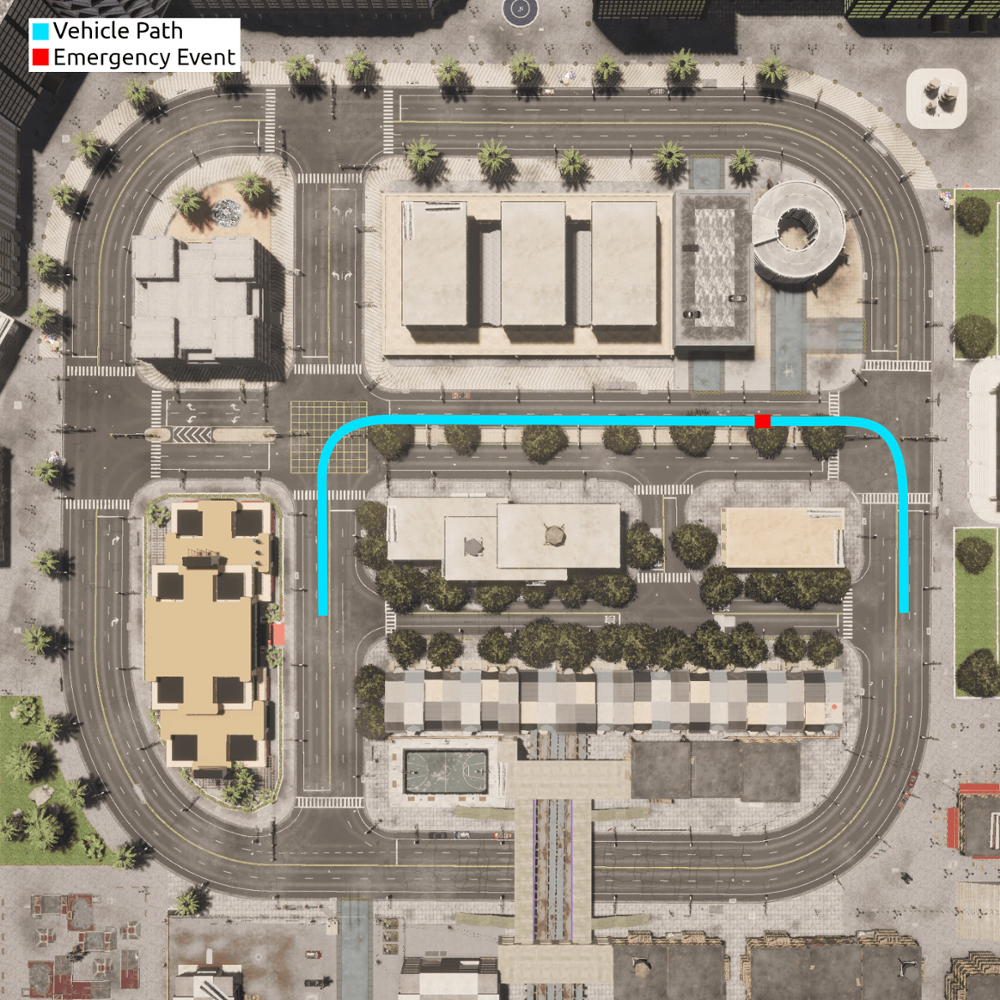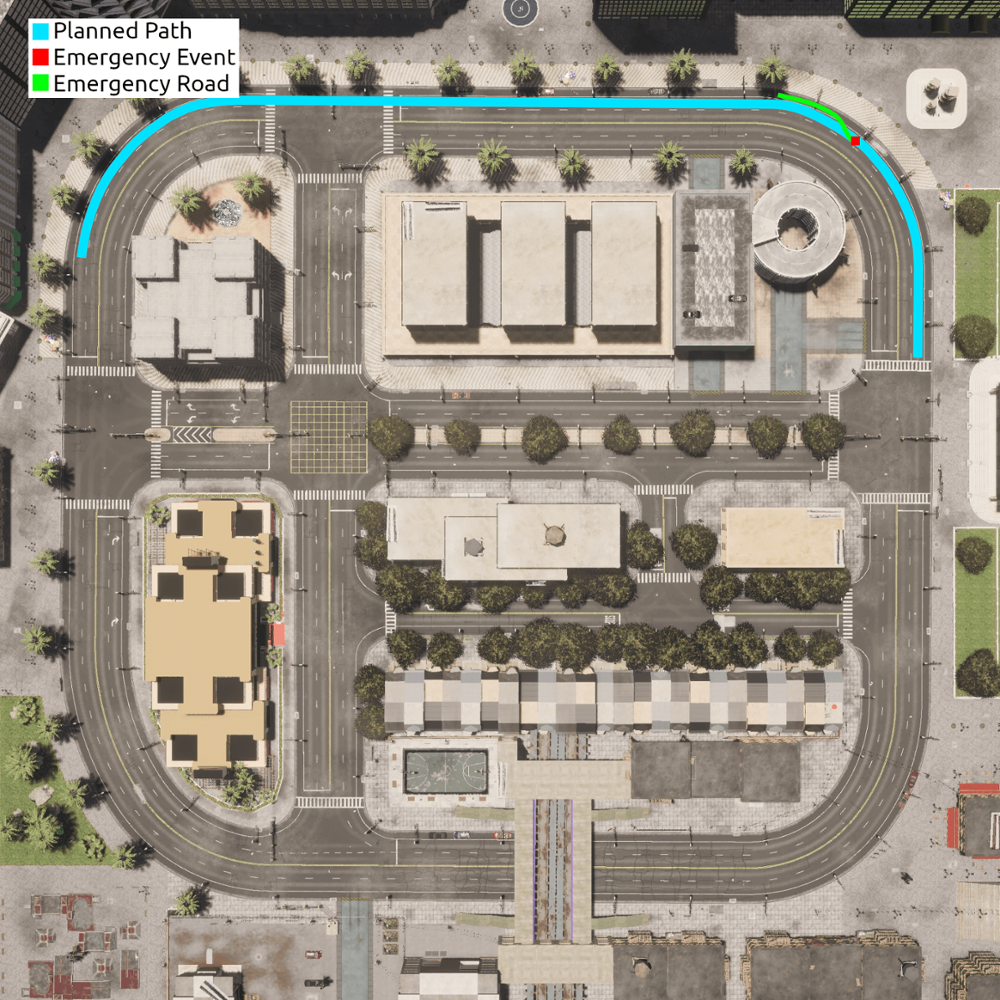Complementary Material
- Departamento de Informática
- Control, Learning and Optimization of Systems (CAOS)
- Research
- Complementary Material
-
Emergency Strategy Selection Based on Self-Awareness in Autonomous Vehicles
Figure 3: Previous testing platform and the new perception system
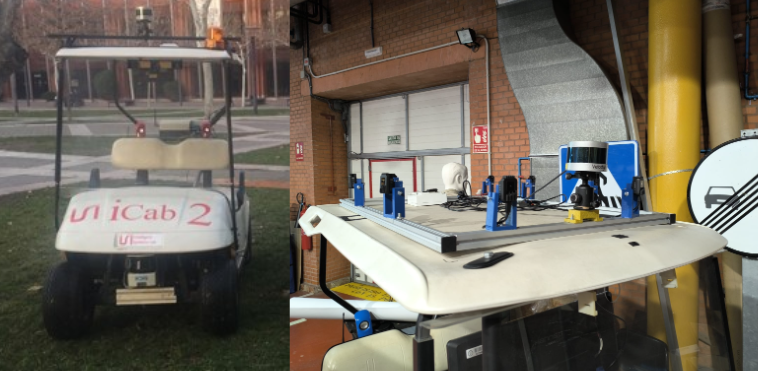
Figure 3: Previous testing platform and the new perception system.
Figure 4: Plan of the proposed experiment and the resulting odometry.
Figure 5: Vehicle speed and behaviour signals during the test.
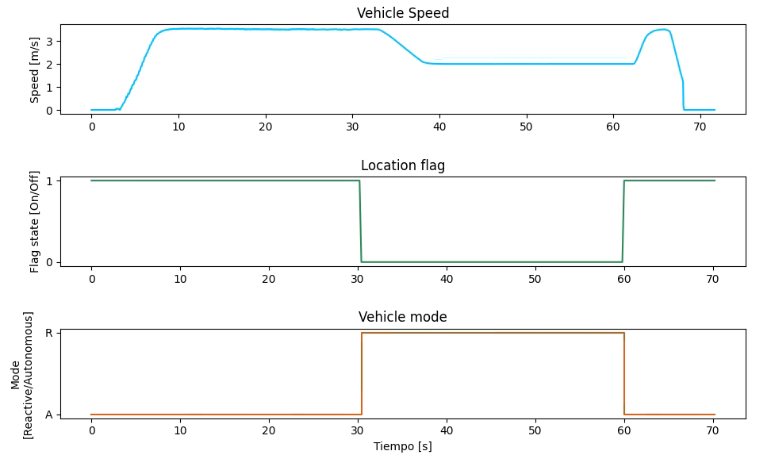
Figure 5: Vehicle speed and behaviour signals during the test.
Figure G.1: Aerial comparison of the real campus and the simulated model.
Figure G.2: Sample of the creation of driving lanes.

Figure G.2: Sample of the creation of driving lanes
Figure G.3: Simulated model of the real experimental vehicle.
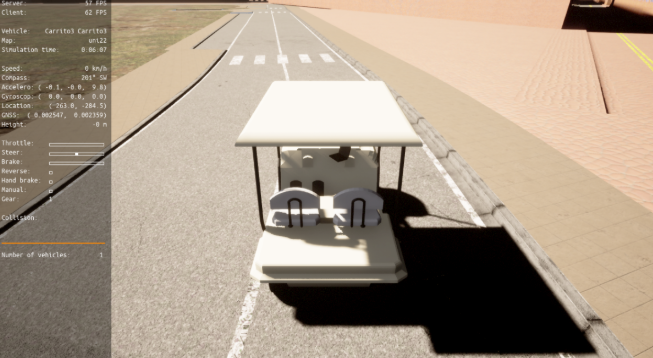
Figure G.3: Simulated model of the real experimental vehicle.
-
Reservation Based Intersection Arbitration with Behavior Cooperation and Time Optimization
Figure 6. Intersections
Figura 8. Arbitration
-
Behavioral Based Decision-Making Scheme for Cooperative Connected Automated Mobility.
Figure 3. Carla world experimentation use cases.
Figure 4. Result road plans followed with odometry and ABPs.

Figure 4a. Custom ABP Plan

Figure 4b. Stop ABP Plan

Figure 4c. Critical Failure Plan

Figure 4d. Sensor Failure Plan
Figure 5. Vehicle speed and behavior activation during testing.

Figure 5a. Custom ABP

Figure 5b. Stop ABP
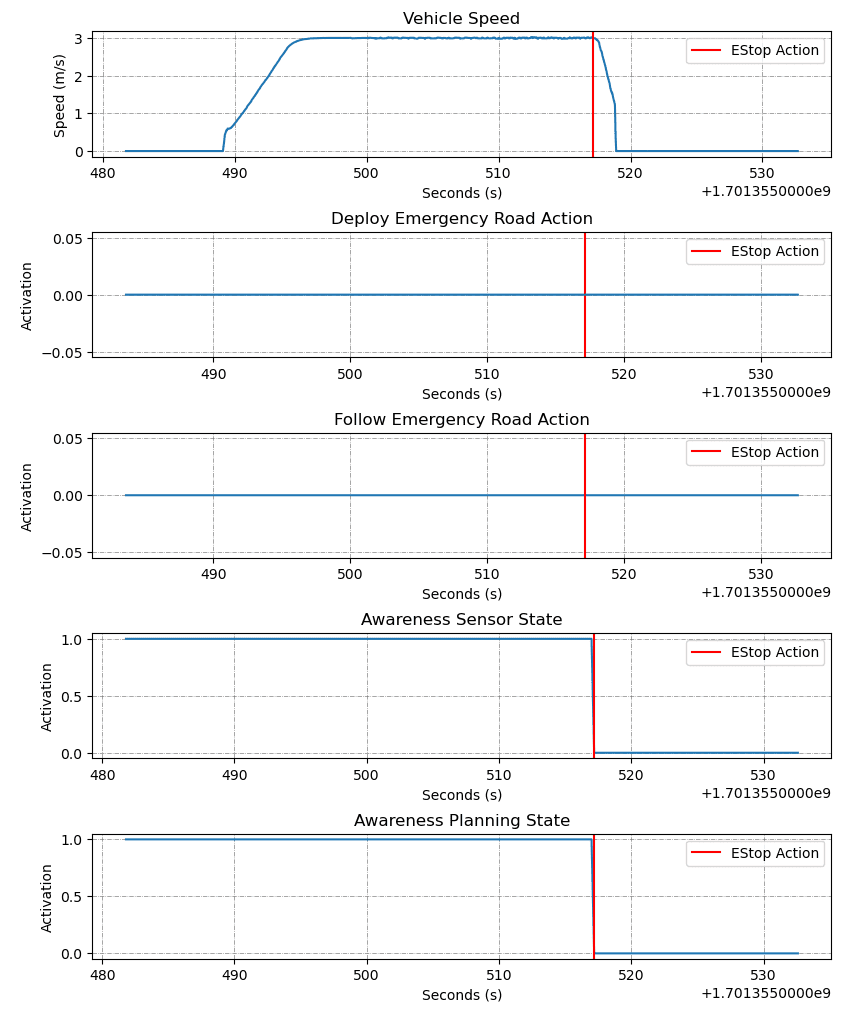
Figure 5c. Critical Failure

Figure 5d. Sensor Failure


